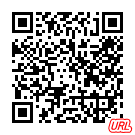Hoarding Test |
| 価格 | 無料 | ダウンロード |
||
|---|---|---|---|---|
| ジャンル | メディカル | |||
サイズ | 625.0KB | |||
| 開発者 | Inquiry Health LLC | |||
| 順位 |
| |||
| リリース日 | 2020-10-01 16:00:00 | 評価 | 評価が取得できませんでした。 | |
| 互換性 | iOS 13.0以降が必要です。 iPhone、iPad および iPod touch 対応。 | |||
Evaluate your risk of hoarding disorder with a validated screening test.
Compulsive hoarding AKA hoarding disorder is a pattern of excessive acquisition of and an unwillingness to discard large volumes of items that cover the living areas of the home and cause significant distress and impairment.
Hoarding is not necessarily collecting - collectors often search specific items with high subjective value with a common theme and organize them meticulously. Hoarders often keep items with no true meaning and are disorganized.
The [DSM-5](https://en.wikipedia.org/wiki/DSM-5) diagnostic criteria for hoarding disorder are:
Persistent difficulty discarding or parting with possessions, regardless of the value others may attribute to these possessions.
This difficulty is due to strong urges to save items and/or distress associated with discarding.
The symptoms result in the accumulation of a large number of possessions that fill up and clutter active living areas of the home or workplace to the extent that their intended use is no longer possible. If all living areas become decluttered, it is only because of the [interventions](https://en.wikipedia.org/wiki/Intervention_(counseling)) of third parties (e.g., family members, cleaners, authorities).
The symptoms cause clinically significant distress or impairment in social, occupational, or other important areas of functioning (including maintaining a safe environment for self and others).
The hoarding symptoms are not due to a general medical condition (e.g., brain injury, cerebrovascular disease).
The hoarding symptoms are not restricted to the symptoms of another mental disorder
Disclaimer: This test is NOT a diagnostic test. A diagnosis can only be provided by a qualified healthcare professional. Please consult a physician or mental health professional if you are concerned about your mental health.
Frost, R. O., Steketee, G., & Grisham, J. (2004). Measurement of compulsive hoarding: saving inventory-revised. Behaviour research and therapy, 42(10), 1163-1182.
更新履歴
This update contains a navigation bug fix for iOS 14.5.
Compulsive hoarding AKA hoarding disorder is a pattern of excessive acquisition of and an unwillingness to discard large volumes of items that cover the living areas of the home and cause significant distress and impairment.
Hoarding is not necessarily collecting - collectors often search specific items with high subjective value with a common theme and organize them meticulously. Hoarders often keep items with no true meaning and are disorganized.
The [DSM-5](https://en.wikipedia.org/wiki/DSM-5) diagnostic criteria for hoarding disorder are:
Persistent difficulty discarding or parting with possessions, regardless of the value others may attribute to these possessions.
This difficulty is due to strong urges to save items and/or distress associated with discarding.
The symptoms result in the accumulation of a large number of possessions that fill up and clutter active living areas of the home or workplace to the extent that their intended use is no longer possible. If all living areas become decluttered, it is only because of the [interventions](https://en.wikipedia.org/wiki/Intervention_(counseling)) of third parties (e.g., family members, cleaners, authorities).
The symptoms cause clinically significant distress or impairment in social, occupational, or other important areas of functioning (including maintaining a safe environment for self and others).
The hoarding symptoms are not due to a general medical condition (e.g., brain injury, cerebrovascular disease).
The hoarding symptoms are not restricted to the symptoms of another mental disorder
Disclaimer: This test is NOT a diagnostic test. A diagnosis can only be provided by a qualified healthcare professional. Please consult a physician or mental health professional if you are concerned about your mental health.
Frost, R. O., Steketee, G., & Grisham, J. (2004). Measurement of compulsive hoarding: saving inventory-revised. Behaviour research and therapy, 42(10), 1163-1182.
更新履歴
This update contains a navigation bug fix for iOS 14.5.
ブログパーツ第二弾を公開しました!ホームページでアプリの順位・価格・周辺ランキングをご紹介頂けます。
ブログパーツ第2弾!
アプリの周辺ランキングを表示するブログパーツです。価格・順位共に自動で最新情報に更新されるのでアプリの状態チェックにも最適です。
ランキング圏外の場合でも周辺ランキングの代わりに説明文を表示にするので安心です。
サンプルが気に入りましたら、下に表示されたHTMLタグをそのままページに貼り付けることでご利用頂けます。ただし、一般公開されているページでご使用頂かないと表示されませんのでご注意ください。
幅200px版
幅320px版
Now Loading...

「iPhone & iPad アプリランキング」は、最新かつ詳細なアプリ情報をご紹介しているサイトです。
お探しのアプリに出会えるように様々な切り口でページをご用意しております。
「メニュー」よりぜひアプリ探しにお役立て下さい。
Presents by $$308413110 スマホからのアクセスにはQRコードをご活用ください。 →
Now loading...




